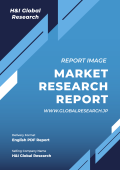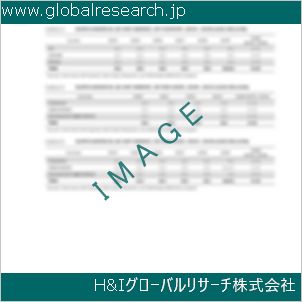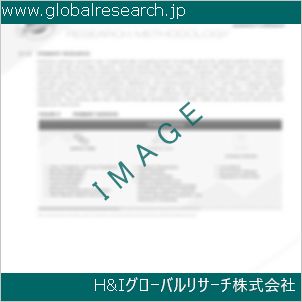目次
第1章. グローバル低VOC接着剤市場レポートの範囲と方法論
1.1. 研究目的
1.2. 研究方法論
1.2.1. 予測モデル
1.2.2. デスクリサーチ
1.2.3. トップダウンとボトムアップアプローチ
1.3. 研究の属性
1.4. 研究の範囲
1.4.1. 市場定義
1.4.2. 市場セグメンテーション
1.5. 研究仮定
1.5.1. 包含と除外
1.5.2. 制限事項
1.5.3. 調査対象期間
第2章 執行要約
2.1. CEO/CXOの視点
2.2. 戦略的洞察
2.3. ESG分析
2.4. 主要な発見
第3章 グローバル低VOC接着剤市場動向分析
3.1. グローバル低VOC接着剤市場を形作る市場要因(2024-2035)
3.2. 成長要因
3.2.1. VOC排出に関する環境規制の強化
3.2.2. パッケージング業界と建設業界からの需要の急増
3.3. 制約
3.3.1. 環境対応型接着剤の高コスト
3.3.2. 高負荷用途における性能範囲の制限
3.4. 機会
3.4.1. ポリマー化学における技術革新
3.4.2. グリーンビルディング認証の増加とエコラベル化のトレンド
第4章 グローバル低VOC接着剤産業分析
4.1. ポーターの5つの力モデル
4.1.1. 買い手の交渉力
4.1.2. 供給者の交渉力
4.1.3. 新規参入の脅威
4.1.4. 代替品の脅威
4.1.5. 競合企業の競争
4.2. ポーターの5つの力予測モデル(2024-2035)
4.3. PESTEL分析
4.3.1. 政治
4.3.2. 経済的
4.3.3. 社会
4.3.4. 技術的
4.3.5. 環境
4.3.6. 法的
4.4. 主要な投資機会
4.5. 主要な成功戦略(2025年)
4.6. 市場シェア分析(2024-2025)
4.7. グローバル価格分析と動向(2025年)
4.8. 分析家の推奨事項と結論
第5章. グローバル低VOC接着剤市場規模と技術別予測(2025~2035年)
5.1. 市場概要
5.2. グローバル低VOC接着剤市場パフォーマンス – 潜在分析(2025年)
5.3. 水性
5.3.1. 主要国別内訳推計と予測(2024~2035年)
5.3.2. 地域別市場規模分析(2025年~2035年)
5.4. ホットメルト
5.4.1. 主要国別市場規模推計と予測(2024~2035年)
5.4.2. 地域別市場規模分析、2025–2035
5.5. 反応型
5.5.1. 主要国別内訳推計と予測(2024年~2035年)
5.5.2. 地域別市場規模分析、2025–2035
第6章. グローバル低VOC接着剤市場規模と予測(化学別)、2025–2035
6.1. 市場概要
6.2. グローバル低VOC接着剤市場パフォーマンス – 潜在分析(2025年)
6.3. アクリルポリマーエマルジョン
6.4. ポリビニルアセテート(PVA)エマルジョン
6.5. ビニルアセテートエチレン(VAE)エマルジョン
6.6. エチレンビニルアセテート(EVA)エマルジョン
6.7. スチレン・ブタジエンコポリマー(SBC)
6.8. ポリウレタン
6.9. エポキシ
第7章. グローバル低VOC接着剤市場規模と予測(用途別産業別)2025–2035
7.1. 建築・建設
7.2. パッケージング
7.3. 自動車
7.4. 木工
7.5. 消費者・DIY
7.6. その他
第8章. グローバル低VOC接着剤市場規模と地域別予測(2025~2035年)
8.1. グローバル市場、地域別概要
8.2. 主要なリーダー企業と新興国
8.3. 北米低VOC接着剤市場
8.3.1. アメリカ合衆国
8.3.1.1. 技術別内訳、2025–2035
8.3.1.2. 化学分類別動向(2025~2035年)
8.3.2. カナダ
8.3.2.1. 技術別分析(2025年~2035年)
8.3.2.2. 化学分野の分析、2025–2035
8.4. 欧州低VOC接着剤市場
8.4.1. イギリス
8.4.1.1. 技術別内訳、2025–2035
8.4.1.2. 化学分類別動向、2025–2035
8.4.2. ドイツ
8.4.3. フランス
8.4.4. スペイン
8.4.5. イタリア
8.4.6. 欧州その他
8.5. アジア太平洋地域低VOC接着剤市場
8.5.1. 中国
8.5.2. インド
8.5.3. 日本
8.5.4. オーストラリア
8.5.5. 韓国
8.5.6. アジア太平洋地域その他
8.6. ラテンアメリカ低VOC接着剤市場
8.6.1. ブラジル
8.6.2. メキシコ
8.7. 中東・アフリカ低VOC接着剤市場
8.7.1. アラブ首長国連邦
8.7.2. サウジアラビア
8.7.3. 南アフリカ
8.7.4. 中東・アフリカその他の地域
第9章 競合分析
9.1. 主要な市場戦略
9.2. BASF SE
9.2.1. 当社概要
9.2.2. 主要幹部
9.2.3. 会社の概要
9.2.4. 財務実績(データ入手状況により異なります)
9.2.5. 製品/サービスポートフォリオ
9.2.6. 最近の動向
9.2.7. 市場戦略
9.2.8. SWOT分析
9.3. 3M社
9.4. ヘンケルAG & Co. KGaA
9.5. H.B.フラー・カンパニー
9.6. ダウ・インク
9.7. シカAG
9.8. アシュランド・グローバル・ホールディングス・インク
9.9. アベリー・デンニソン・コーポレーション
9.10. アルケマ・グループ
9.11. イリノイ・ツール・ワークス・インク
9.12. ピディライト・インダストリーズ・リミテッド
9.13. ハンツマン・コーポレーション
9.14. フランクリン・インターナショナル
9.15. ボストーク(アルケマ)
9.16. ロード・コーポレーション
表一覧
表1. グローバル低VOC接着剤市場、レポートの範囲
表2. グローバル低VOC接着剤市場の見積もりおよび予測(地域別)2024–2035
表3. グローバル低VOC接着剤市場規模推計と予測(技術別)2024–2035
表4. グローバル低VOC接着剤市場規模推計と予測(化学種類別)2024–2035
表5. グローバル低VOC接着剤市場規模推計と予測(最終用途産業別)2024–2035
表6. 米国低VOC接着剤市場規模予測(2024~2035年)
表7. カナダ低VOC接着剤市場規模予測(2024~2035年)
表8. イギリス低VOC接着剤市場規模推計と予測(2024–2035年)
表9. ドイツの低VOC接着剤市場規模推計と予測(2024~2035年)
表10. フランス低VOC接着剤市場規模予測、2024–2035
表11. スペイン低VOC接着剤市場規模推計と予測(2024~2035年)
表12. イタリア低VOC接着剤市場規模推計と予測(2024~2035年)
表13. 欧州その他の地域 低VOC接着剤市場規模推計と予測(2024~2035年)
表14. 中国低VOC接着剤市場規模予測(2024年~2035年)
表15. インドの低VOC接着剤市場規模推計と予測(2024年~2035年)
表16. 日本の低VOC接着剤市場規模予測(2024年~2035年)
表17. オーストラリア低VOC接着剤市場規模推計と予測(2024~2035年)
表18. 韓国低VOC接着剤市場規模推計と予測(2024~2035年)
表19. アジア太平洋地域(その他)市場規模推計と予測、2024–2035
表20. ブラジル低VOC接着剤市場規模推計と予測(2024~2035年)
表21. メキシコ低VOC接着剤市場規模推計と予測(2024~2035年)
表22. アラブ首長国連邦(UAE)低VOC接着剤市場規模推計と予測(2024~2035年)
表23. サウジアラビア低VOC接着剤市場規模推計と予測(2024~2035年)
表24. 南アフリカ低VOC接着剤市場規模推計と予測(2024~2035年)
表25. 中東・アフリカその他の地域市場規模予測(2024年~2035年)
図表一覧
図1. グローバル低VOC接着剤市場、調査方法論
図2. グローバル低VOC接着剤市場、市場推計手法
図3. グローバル市場規模推計および予測方法
図4. グローバル低VOC接着剤市場、2025年の主要動向
図5. グローバル低VOC接着剤市場、成長見通し 2024–2035
図6. グローバル低VOC接着剤市場、ポーターの5つの力モデル
図7. グローバル低VOC接着剤市場、PESTEL分析
図8. グローバル低VOC接着剤市場、バリューチェーン分析
図9. 低VOC接着剤市場(技術別)、2025年と2035年
図10. 低VOC接着剤市場(化学種類別)、2025年と2035年
図11. 低VOC接着剤市場(最終用途産業別)、2025年と2035年
図12. 北米低VOC接着剤市場、2025年と2035年
図13. 欧州低VOC接着剤市場、2025年および2035年
図14. アジア太平洋地域低VOC接着剤市場、2025年および2035年
図15. ラテンアメリカ低VOC接着剤市場、2025年および2035年
図16. 中東・アフリカ低VOC接着剤市場、2025年と2035年
図17. グローバル低VOC接着剤市場、企業別市場シェア分析(2025年)
Chapter 1. Global Low VOC Adhesives Market Report Scope & Methodology
1.1. Research Objective
1.2. Research Methodology
1.2.1. Forecast Model
1.2.2. Desk Research
1.2.3. Top Down and Bottom-Up Approach
1.3. Research Attributes
1.4. Scope of the Study
1.4.1. Market Definition
1.4.2. Market Segmentation
1.5. Research Assumption
1.5.1. Inclusion & Exclusion
1.5.2. Limitations
1.5.3. Years Considered for the Study
Chapter 2. Executive Summary
2.1. CEO/CXO Standpoint
2.2. Strategic Insights
2.3. ESG Analysis
2.4. Key Findings
Chapter 3. Global Low VOC Adhesives Market Forces Analysis
3.1. Market Forces Shaping the Global Low VOC Adhesives Market (2024-2035)
3.2. Drivers
3.2.1. Rising Environmental Regulations on VOC Emissions
3.2.2. Surging Demand from Packaging and Construction Industries
3.3. Restraints
3.3.1. High Production Cost of Eco-Friendly Adhesives
3.3.2. Limited Performance Scope in High-Stress Applications
3.4. Opportunities
3.4.1. Technological Innovation in Polymer Chemistries
3.4.2. Increasing Green Building Certifications and Eco-labeling Trends
Chapter 4. Global Low VOC Adhesives Industry Analysis
4.1. Porter’s 5 Forces Model
4.1.1. Bargaining Power of Buyer
4.1.2. Bargaining Power of Supplier
4.1.3. Threat of New Entrants
4.1.4. Threat of Substitutes
4.1.5. Competitive Rivalry
4.2. Porter’s 5 Force Forecast Model (2024-2035)
4.3. PESTEL Analysis
4.3.1. Political
4.3.2. Economical
4.3.3. Social
4.3.4. Technological
4.3.5. Environmental
4.3.6. Legal
4.4. Top Investment Opportunities
4.5. Top Winning Strategies (2025)
4.6. Market Share Analysis (2024-2025)
4.7. Global Pricing Analysis and Trends 2025
4.8. Analyst Recommendation & Conclusion
Chapter 5. Global Low VOC Adhesives Market Size & Forecasts by Technology 2025–2035
5.1. Market Overview
5.2. Global Low VOC Adhesives Market Performance - Potential Analysis (2025)
5.3. Water-Based
5.3.1. Top Countries Breakdown Estimates & Forecasts, 2024–2035
5.3.2. Market Size Analysis, by Region, 2025–2035
5.4. Hot-Melt
5.4.1. Top Countries Breakdown Estimates & Forecasts, 2024–2035
5.4.2. Market Size Analysis, by Region, 2025–2035
5.5. Reactive
5.5.1. Top Countries Breakdown Estimates & Forecasts, 2024–2035
5.5.2. Market Size Analysis, by Region, 2025–2035
Chapter 6. Global Low VOC Adhesives Market Size & Forecasts by Chemistry 2025–2035
6.1. Market Overview
6.2. Global Low VOC Adhesives Market Performance - Potential Analysis (2025)
6.3. Acrylic Polymer Emulsion
6.4. Polyvinyl Acetate (PVA) Emulsion
6.5. Vinyl Acetate Ethylene (VAE) Emulsion
6.6. Ethylene Vinyl Acetate (EVA) Emulsion
6.7. Styrene-Butadiene Copolymer (SBC)
6.8. Polyurethane
6.9. Epoxy
Chapter 7. Global Low VOC Adhesives Market Size & Forecasts by End-Use Industry 2025–2035
7.1. Building & Construction
7.2. Packaging
7.3. Automotive
7.4. Woodworking
7.5. Consumer & DIY
7.6. Others
Chapter 8. Global Low VOC Adhesives Market Size & Forecasts by Region 2025–2035
8.1. Global Market, Regional Snapshot
8.2. Top Leading & Emerging Countries
8.3. North America Low VOC Adhesives Market
8.3.1. U.S.
8.3.1.1. Technology Breakdown, 2025–2035
8.3.1.2. Chemistry Breakdown, 2025–2035
8.3.2. Canada
8.3.2.1. Technology Breakdown, 2025–2035
8.3.2.2. Chemistry Breakdown, 2025–2035
8.4. Europe Low VOC Adhesives Market
8.4.1. UK
8.4.1.1. Technology Breakdown, 2025–2035
8.4.1.2. Chemistry Breakdown, 2025–2035
8.4.2. Germany
8.4.3. France
8.4.4. Spain
8.4.5. Italy
8.4.6. Rest of Europe
8.5. Asia Pacific Low VOC Adhesives Market
8.5.1. China
8.5.2. India
8.5.3. Japan
8.5.4. Australia
8.5.5. South Korea
8.5.6. Rest of Asia Pacific
8.6. Latin America Low VOC Adhesives Market
8.6.1. Brazil
8.6.2. Mexico
8.7. Middle East & Africa Low VOC Adhesives Market
8.7.1. UAE
8.7.2. Saudi Arabia
8.7.3. South Africa
8.7.4. Rest of Middle East & Africa
Chapter 9. Competitive Intelligence
9.1. Top Market Strategies
9.2. BASF SE
9.2.1. Company Overview
9.2.2. Key Executives
9.2.3. Company Snapshot
9.2.4. Financial Performance (Subject to Data Availability)
9.2.5. Product/Services Port
9.2.6. Recent Development
9.2.7. Market Strategies
9.2.8. SWOT Analysis
9.3. 3M Company
9.4. Henkel AG & Co. KGaA
9.5. H.B. Fuller Company
9.6. Dow Inc.
9.7. Sika AG
9.8. Ashland Global Holdings Inc.
9.9. Avery Dennison Corporation
9.10. Arkema Group
9.11. Illinois Tool Works Inc.
9.12. Pidilite Industries Limited
9.13. Huntsman Corporation
9.14. Franklin International
9.15. Bostik (Arkema)
9.16. Lord Corporation
❖ 免責事項 ❖
http://www.globalresearch.jp/disclaimer












